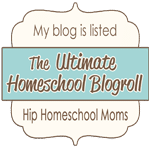 Our reading program has undergone quite a transformation since we first began teaching Syd to read back when she was three. (Hey, she asked, I provided. Don't judge.) We have a system now that, I think, works pretty well, so I thought I'd share with you how we spend the first part of each day.
Our reading program has undergone quite a transformation since we first began teaching Syd to read back when she was three. (Hey, she asked, I provided. Don't judge.) We have a system now that, I think, works pretty well, so I thought I'd share with you how we spend the first part of each day.The spine of our program is Jolly Phonics. From what I've seen, it's somewhat similar to AAR, but I think it's more fun for younger children. We have the complete JP curriculum, and most days go something like this:
First, I tell the story that goes along with whichever phoneme we're learning that day. The handbook gives you just a brief outline so that you can tweak the story and tell it however you want. Then, I let Syd do the worksheet that goes with that particular lesson. The worksheet includes a picture to color, several words that feature the new phoneme, and a place to practice writing the new letter or digraph. I find that the handwriting portion works especially well because the sheet provides enough practice for her to get a good sense of how the letter or group of letters should be written, without wearing out her tiny, still-developing, four-year-old hands.
Then we quickly run through our stack of phoneme cards so that Syd gets used to translating picture into sound instantly. I know what you're probably thinking. Preschoolers and flash cards... ugh. I thought the same thing when we began, but she really seems to enjoy it, it takes literally under thirty seconds, and it's improved her reading immensely.
The rest of the lesson can vary day to day, depending on how much Syd wants to do and how much time we have.
There is always some kind of reading practice. We began with the Bob books, and once Syd was able to read those easily I began to integrate more difficult books, such as Dr. Seuss or Little Bear. I help if Syd comes across a phoneme she hasn't learned yet, but otherwise she does all the reading out loud, and I do correct her if she reads a word wrong.
On some days, we'll do dictation. I say one simple sentence, and she writes it. That's all. We don't do this too often, and never more than one sentence.
If Syd needs some practice with a certain phoneme, I'll also use a worksheet from Explode the Code. They're rather repetitive, so we don't use them every day, but they're a nice way to mix things up, and they're wonderful for reinforcing things like phonemic awareness or to give Syd some practice decoding words with multiple consonants.
And that about covers it. Teaching the average child to read really isn't as hard as the public schools want you to think.













1 comments:
Hi Mergath,
I have used many different programs for teaching reading and right now I am enjoying Reading Made Easy for the second time around. I found AAR moved too fast for my son. I think you have a good plan and I appreciate you sharing.
Blessings,
Michelle aka Michelle My Bell @ WTM boards
http://homeschool-chalkboard.blogspot.com/
Post a Comment